Among the different styles of music to be found in the Balkans the music of Bulgaria is one of the most challenging to play on guitar. If one desires to become a master of odd rhythms on guitar here is the best grounds to learn and practice.
BULGARIAN MUSIC HISTORY
The history of Bulgarian people is quite interesting and music had a major role in setting their identity. The country was under the domain of foreign invasion for a long time. People fled to the mountain areas and became isolated from the rest of the world. The foreign rules were so tough on Bulgarians that they begun to loose their sense of identity. It was difficult to say what a real free Bulgarian was.
Here music bowed to help. In the different towns and villages natives were shapping their own cultural life. One of the most common practices was the horo dances. These dances were mainly perform on circles and music was key to it.
Horos were giving Bugarians a chance to feel united, sing their songs, play their music creations, dress their traditional costumes and on the process create their authentic identity.
BASICS OF BULGARIAN MUSIC
Bulgarian music main feature is odd rhythms. Think of any odd meter and you will find it there. Although one can find a 2/4 or a 4/4 among their music most of the time musicians play in 7/8, 5/8, 9/8, 11/8, 13/16.
We all know every musician around the world has a hard time training on odd meters, but don't panic. Good news is Bulgarian musicians are so musical using odd meters that learning their music you will be using them without feeling awkward at all.
This style of music doesn't have lots of scales. In most cases musicians work on Major, minor or Phrygian major scales. It is true that in a deeper level we can find more melodic subtleties including other scales or even microtones. In this article we won't get into it but know that if you would like to pursue this music further there are ways to play every detail of this music on the guitar.
In this article we will focus more on the rhythmic world. As I mentioned earlier Bulgarian styles many times come from horos or dances. There are lots of names for the styles but many times the differences between them are very small. This is mainy due to the origins of the style. Many times we have the same style with the same time signature but having two different names. The names function is to specify the town where it comes from. The rhythmic development is the same but in every town they make it their own by adding details in the performance.
A few examples of these many styles are Paidushko in 5/8, Ruchenitsa in 7/8, Cherkezka in 9/8, Gankino in 11/8, Plovdivsko in 13/16 and a long etc.
PRACTICING BULGARIAN MUSIC FOR GUITAR
Let's get hands on the job and do some practical exercises.
First thing we are going to do is to work on the rhythm subdivision.
We will work on Plovdivsko which is in 13/16.
The subdivision of this rhythm is 2+2+2+3+2+2.
This means we will sing: 12 12 12 123 12 12
We are not going to count 13 beats but will use the way Bulgarian dancers measure steps. This is by using a "short" step for 2 and a "long" step for 3.
Thus a Plovdivsko rhythm would become: short+short+short+long+short+short.
Now when you sing this pattern make sure you hold back the beat when you say "long". Remember this beat is suposed to last longer.
Another good idea is to tap your foot on every "1" of the count as: 12 1212 123 12 12
Now try playing it by strumming an E major. Make sure you continue tapping your foot. If you are not able to tap and play then go back and practice just singing and tapping.
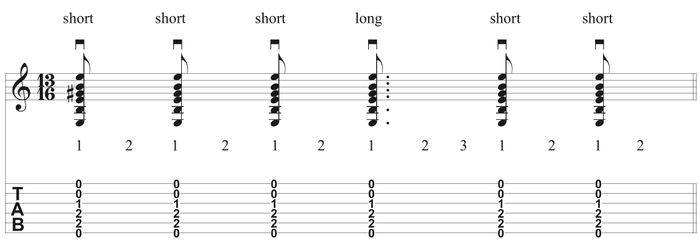
Let's see now a variation.

And here we double the rhythm.

Let's try now playing a scale up and down. The following exercise is based on a scale known around the Middle East as Nekriz. Bulgarians use it as an influence from the Turkish. It is like a Dorian scale with the fourth degree aumented (12b3#456b7).
The scale is on E and in these exercises we don't start playing it from the root.
It is important that you keep tapping your foot and accent the notes with it. This will help you keep the intention of the rhythm and never get lost. Also when you improvise it will help your phrases to make sense inside of the rhythm as well as giving the necessary character.
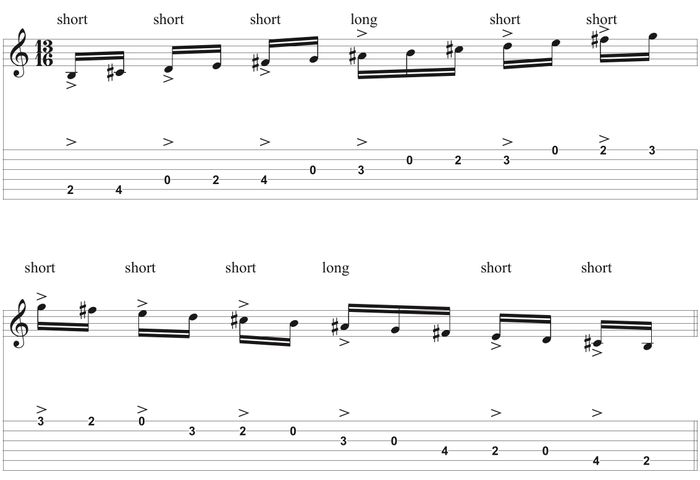
Now we continue on the same scale but make rhythmic variations.
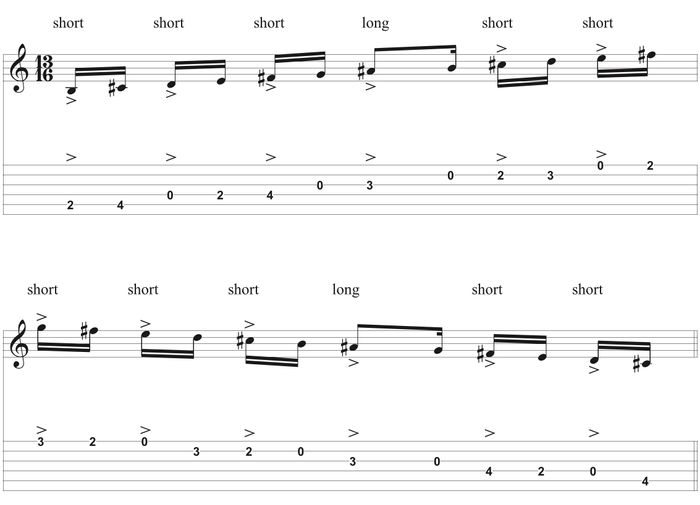
Doing different rhythmic variations will help you when you have to play melodies. And even more when you need to improvise in this type of meters. So let's do one more.
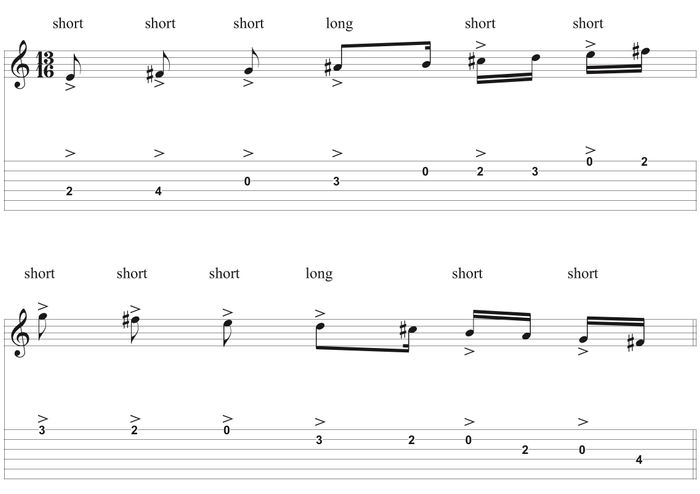
PLAYING A BULGARIAN SONG ON GUITAR
Let's see now a simple melody for "Krivo Plovdivsko Horo". This is a dance tune coming from the town of Plovdisko.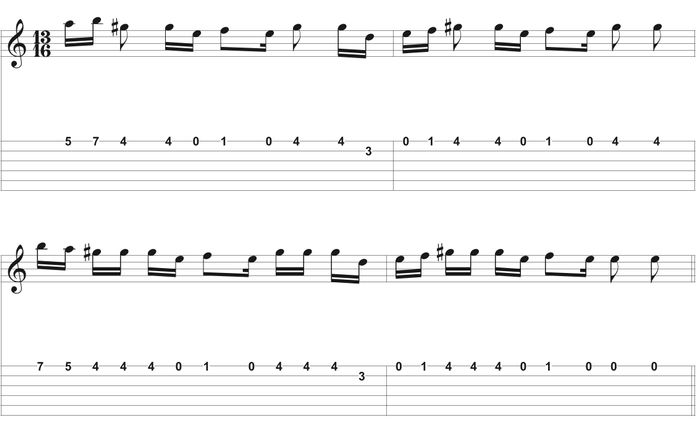
Now you can try a couple of parts from the original Krivo Plovdivsko Horo tune.
It is a piece you can find on my CD "Bulgarian Music for Guitar". 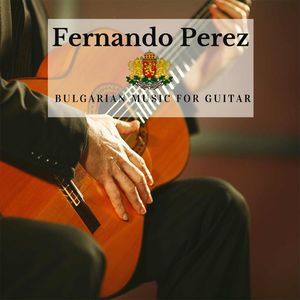
If you like this tune you can find the score/tabs along with other pieces and its explanations on my book "Bulgarian Music for Guitar".
When playing the next example if you are a flatpicker omit the bass notes. If you are a fingerpicking player you can do both the melody line and bass notes.
Notice here how we are playing the second string open. This is in order to keep a ringing effect. The idea comes from imitating the Bulgarian tambura with the guitar.
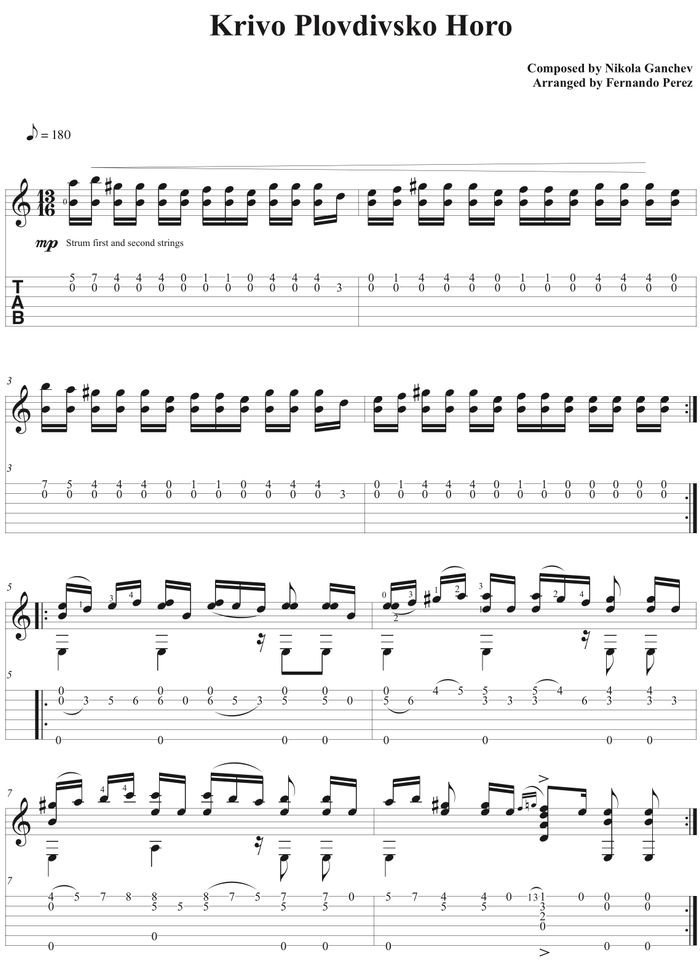
I hope you enjoyed this article. If you are interesting in learning more about Bulgarian or Balkan music for guitar I recommend you to check out my book Bulgarian Music for Guitar. It is full of technical details, full songs and information about this music.
